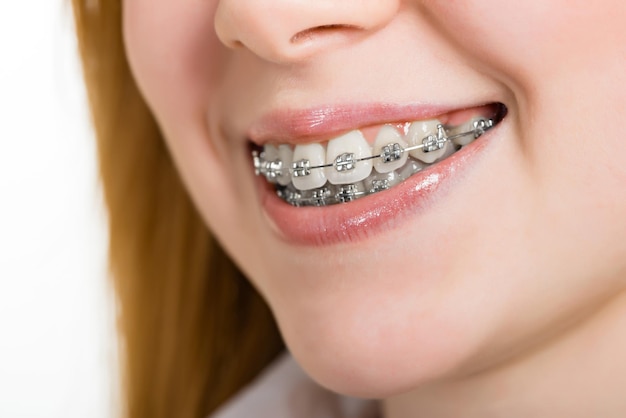
16 Jun Conventional Braces and Their Advantages
Conventional Orthodontic Braces: What You Need to Know?
Orthodontic braces are one of the most common treatments used to straighten misaligned teeth and improve bite problems. While there are different types of braces available today, conventional orthodontic braces remain the most popular choice for many patients. In this article, we’ll discuss what conventional orthodontic braces are, how they work, and what to expect during the treatment process.
What Are Conventional Orthodontic Braces?
Conventional orthodontic braces are a type of dental appliance made up of brackets, wires, and bands that work together to gradually move teeth into their desired positions. The brackets are bonded to the front surface of each tooth, while the archwire connects the brackets and applies gentle pressure to shift the teeth. The bands are sometimes used to hold the brackets in place, especially on the back molars.
In addition to the metal braces, elastics or rubber bands may be used to apply additional force to specific teeth or jaw movements. These may be colored to make them more fun or to match the patient’s preferred style.
How Do They Work?
Orthodontic braces work by applying consistent, gentle pressure to the teeth over time. This pressure gradually moves the teeth into their desired positions, correcting problems such as overcrowding, spacing issues, and bite misalignments. The archwire, which is held in place by the brackets, is tightened or replaced periodically to continue applying the necessary force.
The orthodontist will make periodic adjustments to the braces during follow-up appointments. During these appointments, the orthodontist will tighten or replace the archwire, replace any worn or broken brackets, and monitor the progress of the treatment.
What to Expect During the Treatment Process?
The treatment process for conventional orthodontic braces typically takes anywhere from 18 months to 2 years. However, the duration of the treatment may vary depending on the complexity of the case and the patient’s compliance with the treatment plan.
During the first appointment, the orthodontist will perform a comprehensive examination of the patient’s teeth and jaw to determine if braces are the appropriate treatment option. If so, the orthodontist will take x-rays, photographs, and impressions of the teeth to create a treatment plan specific to the patient’s needs.
Once the treatment plan is created, the orthodontist will bond the brackets to the teeth and attach the archwire. The patient will then need to follow a specific diet and avoid certain foods that may damage the braces or interfere with the treatment process. Good oral hygiene, including brushing and flossing regularly, is essential to keep the braces and teeth clean and healthy.
Follow-up appointments are typically scheduled every 4-6 weeks, during which the orthodontist will adjust the braces, replace worn or broken parts, and monitor the progress of the treatment. During follow-up appointments, the orthodontist also changes the arch wires at regular intervals as these wires exert pressure on the teeth which helps in the movement of teeth. The orthodontist also attaches elastic wires in cases where the patient has a class 3 bite where the lower jaw is ahead of the upper jaw. In case there is a tooth that is impacted inside the bone, the orthodontist has the provision to retrieve the tooth from the bone to its approximate position. In cases where this is needed, the orthodontist places TADS. TADS are temporary anchorage devices that are inserted into the bone. These are like mini-screws made of titanium making it biocompatible.
Elastics are attached to these Tads in order to achieve desired position and movements in teeth. The orthodontist will keep making necessary adjustments every month.
During every monthly visit, the orthodontist also changes the elastic bands if required.
What is the Cost of Dental Braces?
Not all dental treatments are covered by insurance. Depending on the insurance policy some companies provide the equivalent coverage and some do not.
As there are different types of braces, the cost also varies depending on the type.
Metal braces range from Rs. 30,000/- to Rs. 85,000/- depending on the company and make. Every company provides basic to premium-level brackets.
Ceramic braces range from Rs. 50,000/- to Rs. 1,00,000/-
Conclusion
Conventional orthodontic braces are a tried-and-true method for straightening teeth and correcting bite problems. While the treatment process may take some time and require regular appointments, the end result is a beautiful, healthy smile that can last a lifetime. If you’re considering braces, be sure to speak with your orthodontist to determine if they are the right treatment option for you.



